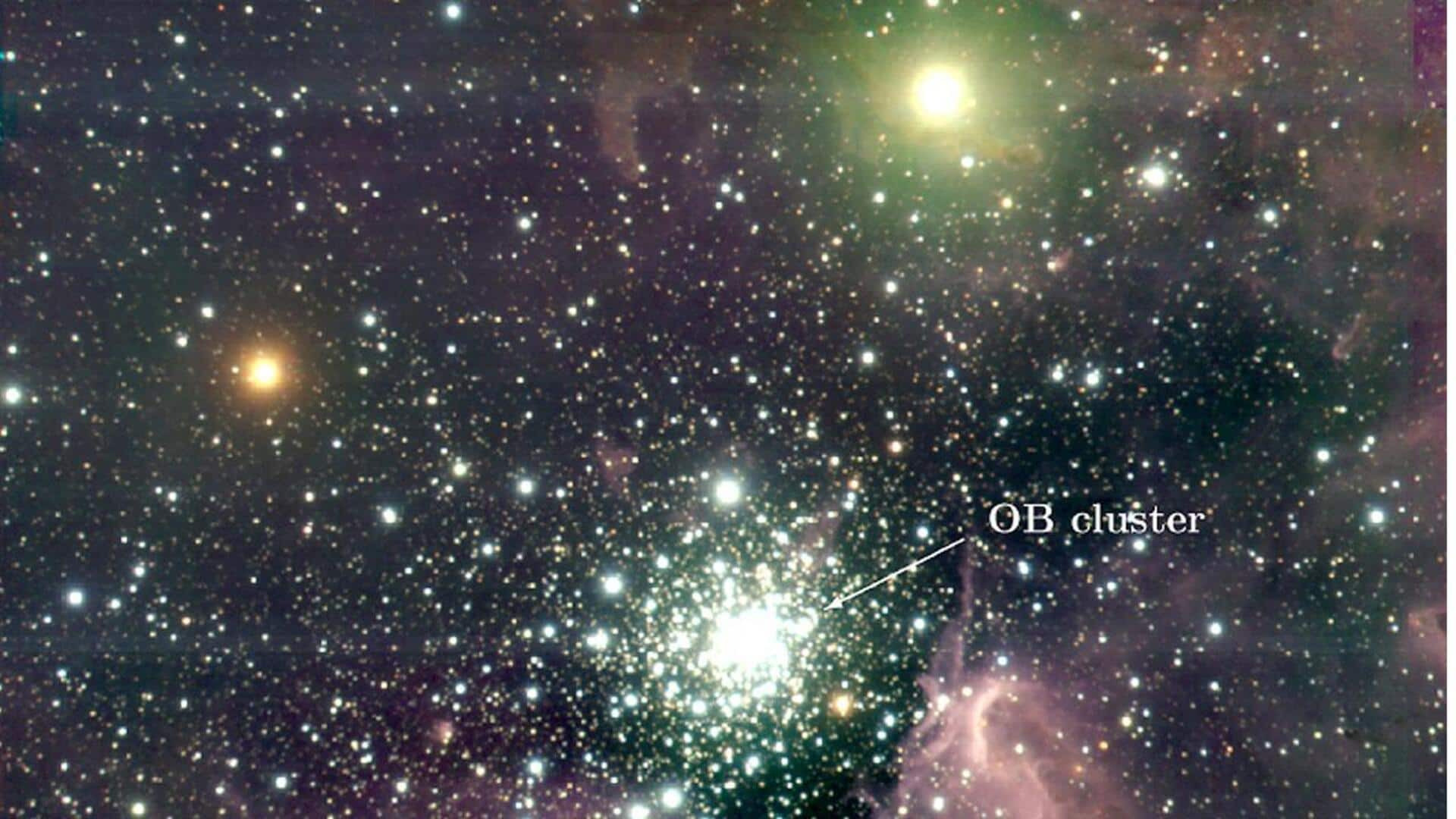
Meet one of the heaviest binary stars in our galaxy
What's the story
Astronomers have discovered one of the most massive binary star systems in our galaxy, NGC3603-A1. The system consists of two stars, one weighing about 93 times and the other about 70 times as much as our Sun. Their combined mass makes them a rare find in the Milky Way. The discovery was made using archival Hubble Space Telescope data and new observations by a research team that included Dr. Phil Massey from Lowell Observatory.
Stellar dynamics
Stellar giants' speed is mind-boggling
The binary stars in NGC3603-A1 orbit each other every 3.8 days, a speed that is mind-boggling. This means that in the time it takes Earth to complete one year around the Sun, these stellar giants would have revolved around each other nearly 100 times. Their closeness and incredible masses create a dynamic relationship that's reshaping both stars.
Key insight
Undergrad student solves cosmic mystery
The discovery of NGC3603-A1 was aided by a crucial insight from Sarah Bodansky, an undergraduate student at Carleton College. While working remotely at Lowell Observatory during the pandemic summer of 2020, she noticed something everyone else had missed in older Hubble data. Her observation revealed spectral features that doubled when the stars moved toward and away from us, confirming their binary nature.
Behavior
Stars mimic older giants
Located in NGC 3603, one of the most active star-forming regions in our galaxy, the binary system could only be resolved using Hubble's exceptional clarity. The stars are so massive and energetic that they mimic Wolf-Rayet stars, usually older giants that shed their outer layers with intense stellar winds. However, the stars in NGC 3603-A1 are still young. This demonstrates how extreme conditions can make huge stars appear far more evolved than they actually are.
Mass transfer
Stellar evolution and mass transfer
The interaction between the two stars in NGC3603-A1 tells a fascinating story of stellar evolution. The smaller one appears to have stolen mass from its larger companion, causing it to spin faster as a result. This kind of mass transfer is crucial for understanding how massive stars change over time and offers insights into their ultimate fate.